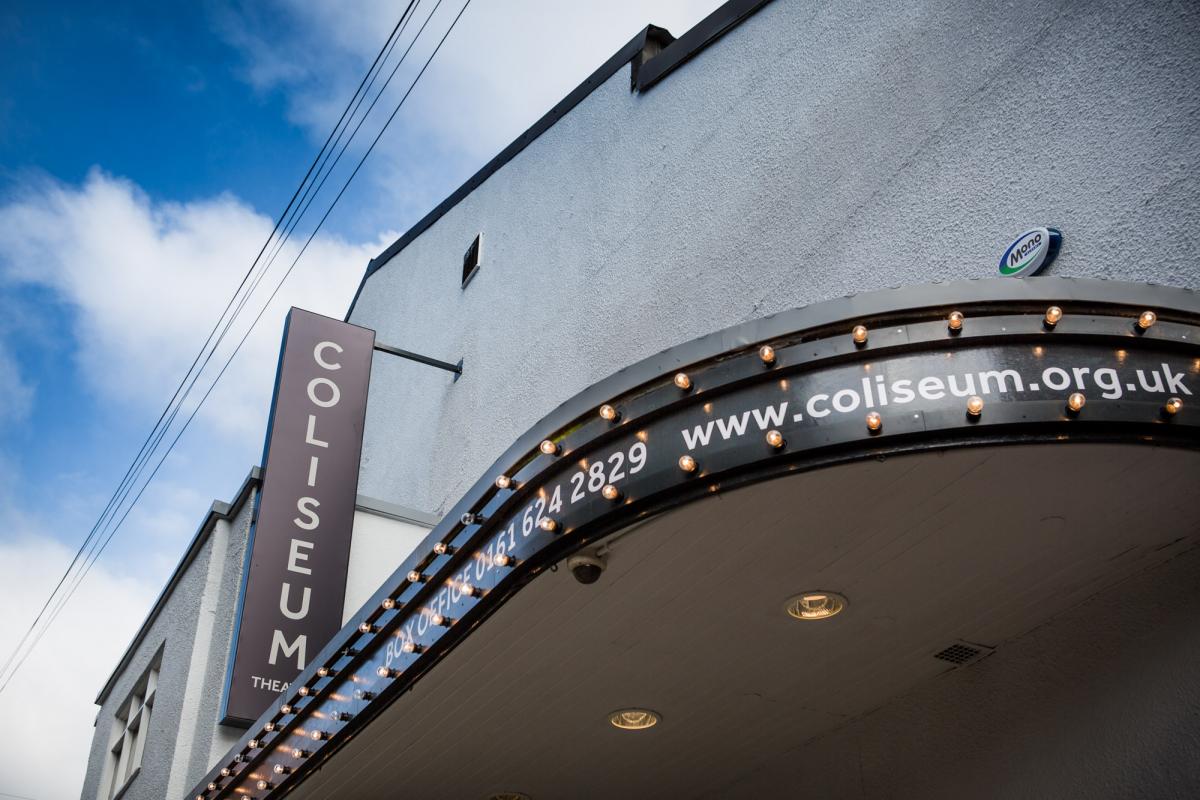A spat between the council and Oldham Coliseum over whether the theatre has asbestos has been put to rest.
In a joint statement from Oldham Council and Oldham Coliseum, the organisations confirmed that asbestos was still present in the building.
While the asbestos was said to be safe for audiences and staff, the organisations said it would make future work to maintain and restore the 135-year-old building more difficult and would increase costs.
However, the statement has only come about after repeated claims from the Coliseum that the building is asbestos safe and had been removed in 2012.
The saga started after multiple local politicians claimed the building, which was built in 1885, had asbestos.
The claim was touted by Greater Manchester Mayor Andy Burnham as part of his weekly phone-in show on February 17.
After a texter asked the mayor about the Coliseum’s closure, the Mayor said: “As I understand it that there is substantial building work that would be needed on the Coliseum – I think there’s asbestos and other issues there.”

The claim was then repeated by Oldham Council’s leader, Cllr Amanda Chadderton.
Speaking to the BBC, the council leader said of the beleaguered building: “It is riddled with asbestos, the walls are falling down and we have done another survey recently and there is a litany of problems.”
The claim was further repeated by the official Oldham Council Twitter account, which, in response to a question about keeping the current building, replied: “It’s not an option unfortunately. The theatre is at the end of its life.
“It is riddled with asbestos and is not accessible for some people with disabilities. The Coliseum was clear that a new building was needed.”
ALSO READ: 'Reckless' use of taxpayers' money to 'save' Coliseum, council claims.
Coliseum says there is no asbestos
Confusion over the claims arose on Monday evening with a post on the official Oldham Coliseum Facebook page.
The Facebook post said: “The Coliseum building is absolutely asbestos safe, reports that it is riddled with asbestos are outdated and incorrect.
“It was removed in 2012 during the refurbishment, as our former Exec Director David explains about 2 minutes into this video from 10 years ago.”
In the video, the director says: “All the asbestos has now gone, as have most of the internal walls which is a bit of a shock.”
When asked about the asbestos on Tuesday morning, Oldham Coliseum provided this statement: “Recent reports that the Coliseum building is 'riddled with asbestos' are untrue.
“Asbestos removal was a large part of the theatre’s well-documented refurbishment in 2012.
“We do not deny that the building faces costly challenges in maintenance and repairs - as would be expected from any 135-year-old building - but it is now, and has been for over a decade, completely asbestos safe.
“Reports of walls falling down are also misleading; an external wall, not connected to the building itself, fell in November because it had a tree growing through it.
“The Coliseum’s staff were the first to check for safety when this happened.”
ALSO READ: Roma community ‘very sad’ to lose Oldham Coliseum lifeline
Asbestos after all
The asbestos story took another turn on Tuesday evening, when Oldham Coliseum edited its Facebook post, nearly 24 hours after it was published, to say that asbestos is still present in the building and instead that a ‘large proportion’ of it had been removed in 2012.

The updated post reads: “The Coliseum building is absolutely asbestos safe. There is a level remaining as would be expected with any building of this age, but any risks are managed and the Coliseum is completely safe for audiences, participants, staff, and visitors.
A large proportion of the asbestos was removed in 2012 during the refurbishment, as our former Exec Director David explains about 2 minutes into this video.”
In a joint statement issued by Oldham Council on Wednesday morning, the organisations blame ‘misinterpretation’ for the confusion.
The statement reads: “There has been much misinterpretation of statements from both organisations with regard to the current Coliseum building.
“Like any building of its age, there is a level of asbestos remaining throughout, but any risks are being managed, meaning it is safe for audiences right now.
“However, this is a complicating factor in any future work on the building, and would need costly specialist contractors to deal with it, on top of the long list of other work needed.
“Any further extension to the current building’s lifespan would be both costly due to the issues with the building and restrictive given the size and location of the Fairbottom Street site.
“Both the Council and Coliseum have long agreed that a new theatre building would be the best option for the future of theatre in Oldham and, for many years, have been looking at more suitable locations.”
What is asbestos?
Asbestos is a naturally occurring fibre-like material that used to be used in buildings for insulation, flooring, and roofing.

Health risks related to the material have been documented in scientific papers since the early 20th century.
The material was not fully banned in the UK until 1999 – with some less strict bans on its use since 1985.
According to the NHS, while the material can be dangerous, if left alone it isn’t harmful – it’s only if it is damaged that it can release fine dust containing asbestos fibres, which enters the lungs and can damage them over time.
Asbestos exposure can cause incurable scarring of the lungs, known as asbestosis – causing shortness of breath, coughing, wheezing, tiredness, chest pains, and swollen fingertips. It can take 20 to 30 years before symptoms appear.
Exposure to asbestos has also been linked to mesothelioma, an incurable cancer that most commonly affects the lining of the lungs.
Get the latest news delivered straight to your inbox by signing up for The Oldham Times' morning and evening catch-up newsletters, plus our breaking news email alerts
Update: This article has been updated. The line “However, the statement has only come about after repeated claims from the Coliseum that the building is asbestos safe and had been removed in 2012” originally read “However, the statement has only come about after repeated claims from the Coliseum that asbestos is not present in the building” and has been updated for clarity.









Comments: Our rules
We want our comments to be a lively and valuable part of our community - a place where readers can debate and engage with the most important local issues. The ability to comment on our stories is a privilege, not a right, however, and that privilege may be withdrawn if it is abused or misused.
Please report any comments that break our rules.
Read the rules hereLast Updated:
Report this comment Cancel